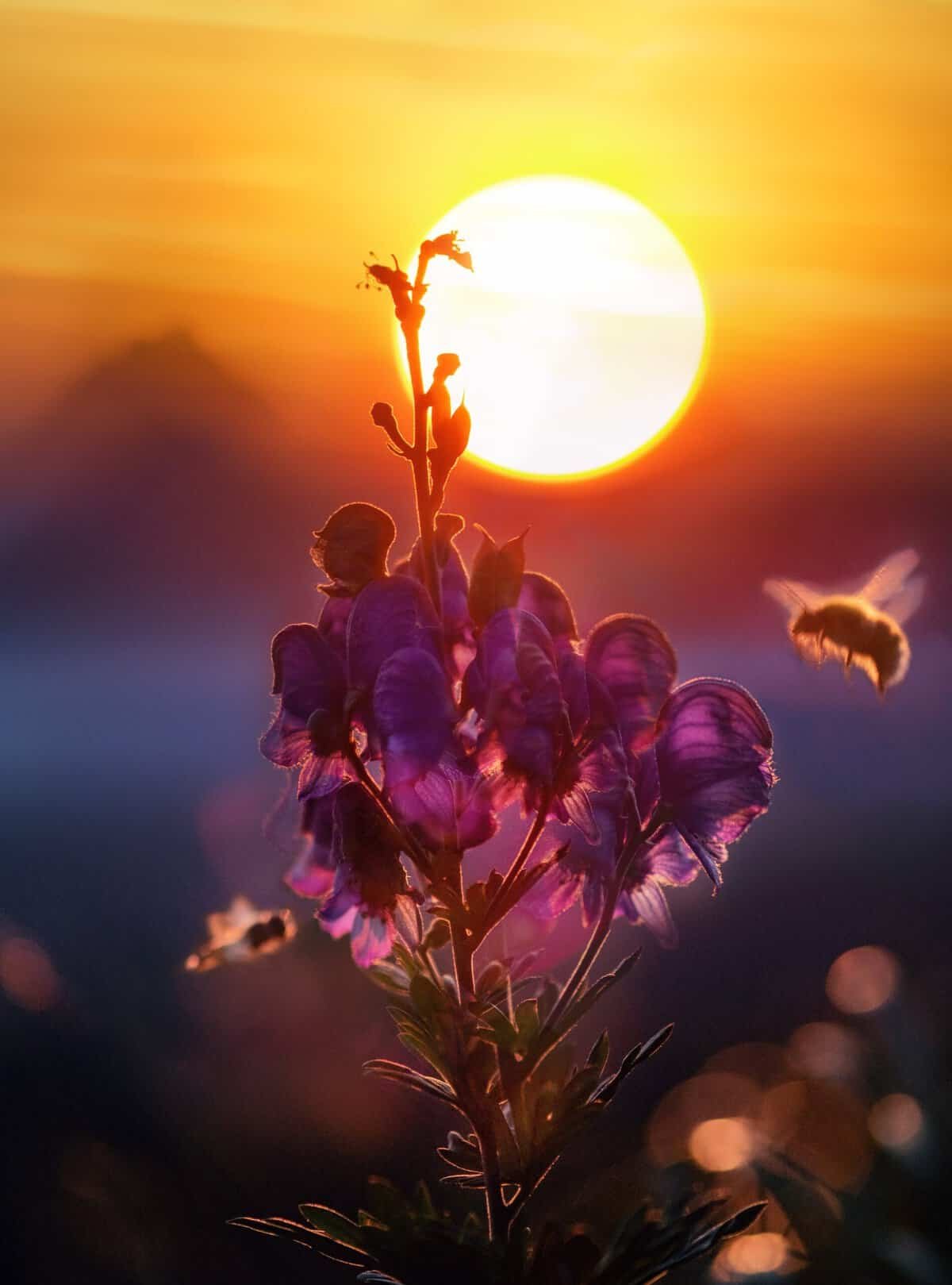If you’re a proud owner of nopal plants, you may have wondered about the role of beneficial insects in caring for these beautiful cacti. Well, wonder no more! In this article, we will explore the important role that beneficial insects play in the health and maintenance of nopal plants. From their role in pollination to natural pest control, these tiny creatures are like little superheroes, silently working their magic to ensure your nopal plants thrive and flourish. So, let’s uncover the fascinating world of beneficial insects and discover how they contribute to the care of our prickly friends.
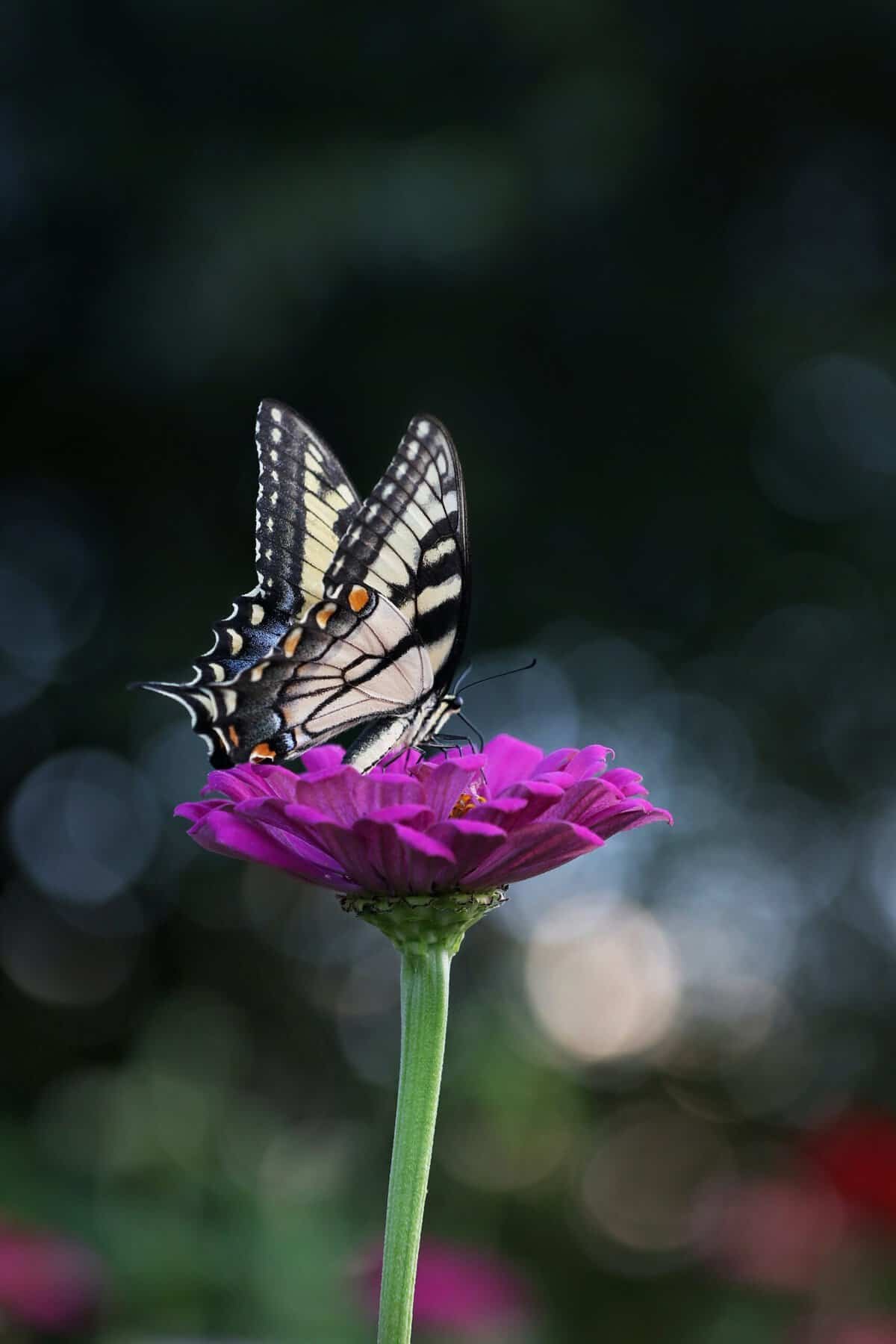
Overview of Nopal Care
Nopal care is an essential aspect of maintaining healthy and productive nopal gardens. Nopal, also known as prickly pear cactus, is a versatile plant that is widely cultivated for its culinary, medicinal, and ornamental purposes. To ensure the success of nopal cultivation, it is vital to understand and address the common challenges associated with nopal care. One effective and environmentally-friendly approach to nopal care is the incorporation of beneficial insects. These insects play a crucial role in maintaining a balanced ecosystem within nopal gardens, contributing to pest control, pollination, organic fertilization, and soil conditioning.
Understanding the Importance of Nopal Care
Nopal care is essential for nurturing healthy and robust nopal plants. By providing proper care, you can ensure optimal growth, productivity, and longevity of these resilient plants. Nopal is known for its ability to tolerate various environmental conditions, but it still requires proper maintenance to thrive. Neglecting the care of nopal plants can make them susceptible to diseases, pests, nutrient deficiencies, and other issues that can hinder their growth and productivity. Therefore, understanding the importance of proactive nopal care is essential for achieving successful cultivation.
Common Challenges in Nopal Care
When it comes to nopal care, several challenges can arise, affecting the health and productivity of the plants. One common challenge is the presence of pests and diseases that can damage the nopal pads and hinder their growth. Additionally, inadequate nutrient availability, insufficient water supply, and poor soil quality can also pose challenges to nopal care. Furthermore, extreme weather conditions, such as high temperatures and drought, can stress the nopal plants and make them more vulnerable to various issues. Understanding these common challenges is crucial in implementing effective strategies to overcome them and ensure the well-being of your nopal garden.
The Role of Beneficial Insects in Nopal Care
Beneficial insects play a significant role in maintaining the health and balance of nopal gardens. These insects are natural predators and pollinators that can contribute to the overall well-being of the ecosystem. Not only do they help control pests, but they also aid in pollination, organic fertilization, and soil conditioning. By incorporating beneficial insects into your nopal care routine, you can reduce the reliance on chemical pesticides, promote ecological sustainability, and enhance the overall health of your nopal plants.
Benefits of Incorporating Beneficial Insects in Nopal Care
Incorporating beneficial insects in nopal care offers several advantages that can positively impact the productivity and well-being of your nopal garden. Firstly, by relying on beneficial insects for pest control, you can minimize the use of chemical pesticides, which can be detrimental to both the environment and human health. Beneficial insects act as natural predators, feeding on harmful pests such as aphids, mealybugs, and scales, helping to keep their populations in check. This natural control of pests not only safeguards your nopal plants but also maintains a harmonious balance in the ecosystem.
Furthermore, beneficial insects also play a crucial role in pollination, ensuring the reproductive success of nopal plants. By facilitating the transfer of pollen between flowers, these insects contribute to the formation of fruits, ensuring a steady supply of nopal pads for consumption and propagation. The organic fertilization provided by these insects also enriches the soil, promoting nutrient availability and overall plant health. Lastly, their activities in breaking down organic matter contribute to soil conditioning, enhancing its structure and fertility.
1. Understanding Beneficial Insects
What are Beneficial Insects?
Beneficial insects are a diverse group of insects that provide valuable services to ecosystems and agricultural systems. These insects are natural enemies of pests and play a crucial role in maintaining the balance between predator and prey populations. Their presence helps control harmful insects and other pest species, reducing the need for chemical interventions. Beneficial insects can also contribute to pollination, organic fertilization, and soil health.
Types of Beneficial Insects
There are various types of beneficial insects that can be beneficial for nopal care. Ladybugs, also known as ladybird beetles, are well-known predators of aphids and other soft-bodied insects. They are highly effective in controlling aphid populations, which are a common pest in nopal gardens. Ladybugs can consume a large number of aphids in a short period, making them a valuable ally in pest control.
Parasitic wasps are another group of beneficial insects that can contribute to nopal care. These small wasps lay their eggs inside or on pests, such as caterpillars or aphids, which eventually leads to the death of the host. Hoverflies, which resemble bees or wasps but do not sting, are effective pollinators and also feed on aphids and other small insects. They are attracted to nectar-rich flowers and can be encouraged to visit nopal gardens by planting suitable flowering plants.
Green lacewings are fragile insects with delicate, lace-like wings. They are voracious predators in their larval stage and feed on aphids, thrips, and other small insects. By releasing or attracting green lacewings to your nopal garden, you can gain an effective natural control over aphid populations.
Life Cycle of Beneficial Insects
Understanding the life cycle of beneficial insects is crucial for their successful integration into nopal care. Beneficial insects usually undergo complete metamorphosis, consisting of four distinct stages: egg, larva, pupa, and adult. The exact duration and appearance of each stage vary depending on the species.
The life cycle usually starts with the laying of eggs by the adult insect, either directly on or near the pest insect or on suitable foliage. Once the eggs hatch, the larvae emerge and actively search for prey. Larvae of beneficial insects are often the most voracious predators, feeding on pests and helping control their populations. After undergoing several growth stages, the larvae transition into the pupal stage, during which they transform into adult insects. Finally, the adult insects emerge from the pupae and contribute to the biological control and other functions within the nopal garden.
2. Identification of Beneficial Insects for Nopal Care
Common Beneficial Insects for Nopal Care
Identifying the common beneficial insects for nopal care is crucial for promoting their presence and understanding their contributions. Ladybugs, or ladybird beetles, are readily recognizable with their distinct coloration and domed shape. They are often red or orange in color, with black spots or patterns on their wings. Ladybugs are beneficial due to their effectiveness in controlling aphid populations, making them a valuable ally in nopal care.
Parasitic wasps are small insects, often less than an inch in size, with slender bodies and visible wing veins. They typically have long antennae and come in various colors, including black, brown, or metallic shades. Despite their slightly intimidating appearance, these wasps are harmless to humans and crucial for pest control in nopal gardens.
Hoverflies are bee or wasp mimics that are often mistaken for their stinging counterparts. They have yellow and black striped bodies, resembling bees, but do not possess stingers. Hoverflies are effective pollinators and are attracted to nectar-rich flowers, making them valuable allies in both pollination and pest control.
Green lacewings have delicate bodies with translucent, lacy wings, hence the name. They are usually pale green or brown and have long antennae. Green lacewings are formidable predators in their larval stage, feeding on aphids, mealybugs, and other small insects. The larvae can be easily recognized by their elongated bodies and large mandibles.
Signs of Beneficial Insect Presence on Nopal
Detecting the presence of beneficial insects in your nopal garden is essential to assess the effectiveness of your strategy and monitor the overall health of the ecosystem. One of the most apparent signs is the reduction of pest populations. If you notice a significant decrease in aphid or other pest numbers, it is likely that beneficial insects such as ladybugs, parasitic wasps, hoverflies, or green lacewings are at work.
You may also observe beneficial insects actively feeding on pests or nectar-rich flowers. Ladybugs can often be seen crawling on nopal pads or flowers, searching for prey. Parasitic wasps may be observed near infested plants, with the females depositing their eggs on the pests. Hoverflies are attracted to nectar-rich flowers, hovering and feeding on the blooms. Green lacewings, too, may be spotted among nopal plants, especially if aphids or other soft-bodied insects are present.
By keeping a watchful eye on these signs, you can gauge the presence and effectiveness of beneficial insects in your nopal garden.
3. Functions and Contributions of Beneficial Insects
Beneficial insects serve several critical functions in nopal care, contributing to pest control, pollination, organic fertilization, and soil conditioning. By understanding their roles and contributions, you can appreciate their importance and implement strategies to maximize their benefits.
Pest Control
One of the primary functions of beneficial insects in nopal care is pest control. Many beneficial insects are natural predators of pests, such as aphids, mealybugs, scales, and caterpillars. They actively feed on these pests, keeping their populations in check. By preying on pests, beneficial insects help protect nopal plants from damage and disease. They act as a natural, environmentally friendly alternative to chemical pesticides, reducing the negative impact on the ecosystem.
Pollination
Beneficial insects, such as hoverflies and bees, are essential pollinators in nopal care. They contribute to the pollination process by transferring pollen from the male to the female parts of the flower, enabling fruit formation. Adequate pollination ensures a steady supply of nopal pads for consumption and the propagation of new plants. Without effective pollinators, the reproductive success and productivity of nopal gardens can be compromised.
Organic Fertilization
Beneficial insects also contribute to organic fertilization in nopal gardens. Many beneficial insects, such as ladybugs and green lacewings, have voracious appetites and consume large quantities of pests. As they feed on prey, the beneficial insects excrete waste materials in the form of frass, which is rich in nutrients. This organic matter enriches the soil, providing essential nutrients to the nopal plants. The recycling of nutrients through the activities of beneficial insects promotes overall plant health and reduces the dependency on synthetic fertilizers.
Soil Conditioning
In addition to organic fertilization, beneficial insects also contribute to soil conditioning in nopal gardens. As they prey on pests and consume organic matter, they break down and decompose plant materials. This decomposition process enhances the nutrient cycling within the soil, making essential elements more readily available to the nopal plants. Moreover, the movement and tunneling activities of certain beneficial insects, such as ground beetles and ants, help improve soil aeration and drainage. The resulting improved soil structure promotes root growth and nutrient uptake, ultimately benefiting the overall health and vitality of nopal plants.
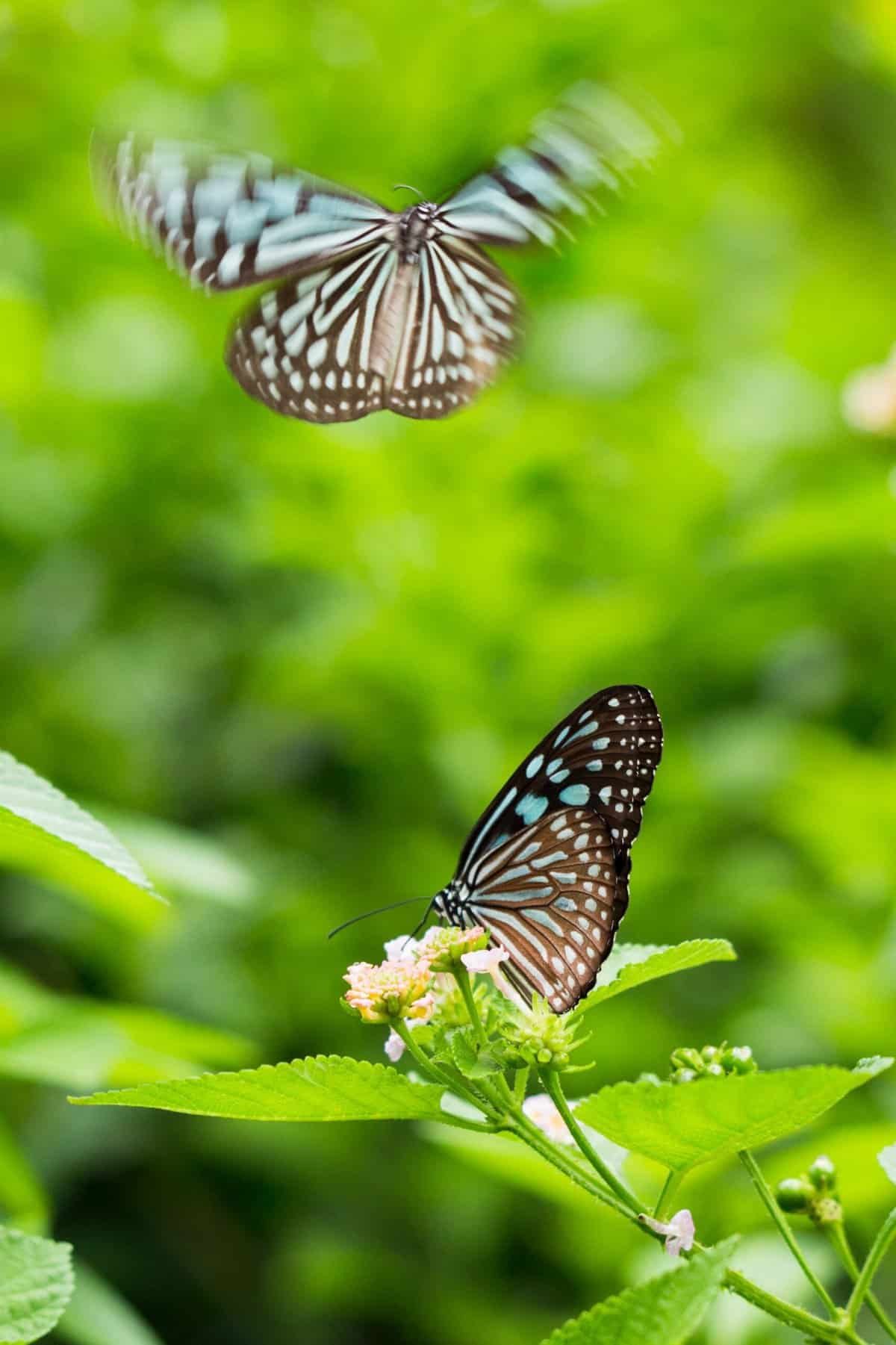
4. Attracting Beneficial Insects to Nopal Gardens
To harness the benefits of beneficial insects for nopal care, it is important to create a welcoming environment that attracts and supports their presence. Several strategies can be implemented to attract and retain these helpful insects in your nopal garden.
Creating a Diverse Habitat
One of the key steps in attracting beneficial insects is creating a diverse habitat. By offering a variety of suitable plants, structures, and microhabitats, you can provide ample resources and shelter for these insects. Planting a diverse range of flowering plants, herbs, and grasses can provide food sources and nectar for adult beneficial insects. Incorporating different plant heights and structures, such as shrubs, trees, and flowering plants with varying bloom periods, can ensure a continuous supply of food and shelter throughout the growing season.
Additionally, providing diverse microhabitats, such as leaf litter, mulch, rock piles, and water features, can create nesting sites and shelter for beneficial insects. These microhabitats serve as overwintering sites, offering protection during harsh weather conditions. Creating a diverse habitat encourages the establishment and long-term presence of beneficial insects in your nopal garden.
Planting Nectar-Rich Flowers
Planting nectar-rich flowers is a crucial strategy to attract beneficial insects to your nopal garden. Beneficial insects, such as ladybugs, hoverflies, and bees, rely on nectar as a food source. By providing a variety of flowering plants that produce abundant nectar, you can entice these insects to visit your garden. Choose plants with a range of bloom periods to ensure a continuous supply of nectar throughout the growing season. Some suitable flowering plants for attracting beneficial insects include marigolds, cosmos, zinnias, sunflowers, lavender, borage, and daisies.
It is important to select plants that are adapted to your regional climate and nopal garden conditions to ensure successful growth and attractiveness to beneficial insects. By incorporating nectar-rich flowers into your nopal garden, you can increase the presence of beneficial insects, which in turn contributes to pest control and pollination.
Utilizing Companion Planting
Companion planting is another effective strategy to attract beneficial insects and promote their presence in your nopal garden. Companion planting involves growing compatible plants together to enhance their growth, deter pests, and attract beneficial insects. By planting certain flowers, herbs, or vegetables alongside your nopal plants, you can create a mutually beneficial environment.
For example, interplanting marigolds with nopal can help repel pests such as aphids and nematodes, while attracting ladybugs and hoverflies. The aromatic herbs such as basil, dill, and coriander can also attract beneficial insects while deterring pests. Additionally, planting flowering herbs and vegetables, such as dill, fennel, and radish, can provide a source of nectar for beneficial insects.
Research suitable companion plants for nopal and experiment with different combinations to determine the most effective arrangement for attracting beneficial insects and supporting nopal care.
Providing Access to Water Sources
Water is a crucial resource for beneficial insects, and providing access to water sources in your nopal garden can increase their presence. A shallow dish or tray filled with water and placed in a shady area can serve as a makeshift water source for beneficial insects. Ensure that the dish is shallow enough to prevent accidental drowning and place pebbles or twigs in the water as landing platforms for the insects.
Alternatively, creating a small pond or water feature can provide a more natural water source for beneficial insects. This not only serves as a drinking spot but also creates additional habitat for aquatic insects, such as dragonflies, which are effective predators of mosquitoes and other pests.
By incorporating water sources into your nopal garden, you provide essential hydration for beneficial insects and increase their chances of establishing and thriving in your garden.
Avoiding Pesticide Use
To attract and retain beneficial insects in your nopal garden, it is essential to avoid the use of chemical pesticides. Pesticides can be harmful not only to pests but also to beneficial insects, disrupting the delicate ecological balance. Even low-toxicity pesticides can have unintended consequences, affecting not only the targeted pests but also the beneficial insects that contribute to the overall health of the garden.
Instead of relying on pesticides, focus on preventive measures, such as good cultural practices, regular monitoring, and the incorporation of beneficial insects. By creating a balanced ecosystem and maintaining the health of your nopal plants, you can minimize the need for chemical interventions and allow beneficial insects to flourish.
5. Specific Beneficial Insects for Nopal Care
While various beneficial insects can contribute to nopal care, some species are particularly effective in controlling pests and promoting the overall health of nopal plants. Understanding the characteristics and behaviors of specific beneficial insects can help you make informed decisions in incorporating them into your nopal care routine.
Ladybugs (Ladybird Beetles)
Ladybugs are well-known and beloved beneficial insects. They are small, oval-shaped beetles that come in various colors and patterns, such as red, orange, or yellow, with black spots or patterns. Ladybugs are voracious predators and feed on aphids, mealybugs, scales, and other soft-bodied insects that commonly infest nopal plants. They can consume a large number of pests within a short period, making them an efficient natural pest control option. To attract ladybugs to your nopal garden, provide nectar-rich flowers, such as marigolds and cosmos, and avoid pesticide use.
Parasitic Wasps
Parasitic wasps are highly beneficial beneficial insects that play a crucial role in pest control. Despite their name, these wasps are harmless to humans and target various pests that infest nopal plants. They lay their eggs either directly on or inside the pests, such as caterpillars, aphids, or whiteflies. As the eggs hatch, the wasp larvae feed on the pests, eventually causing their death. Parasitic wasps are tiny insects and may not be easily visible, but their impact on pest populations is highly effective. To attract parasitic wasps, provide suitable flowering plants and ensure the presence of pests in your nopal garden.
Hoverflies
Hoverflies are beneficial insects that closely resemble bees or wasps in appearance but do not possess stingers. They are effective pollinators and play a significant role in pollination within nopal gardens. In addition to their pollination services, hoverflies are also voracious predators of aphids and other small insects. By attracting hoverflies to your nopal garden through suitable flowering plants, you can enhance both pest control and pollination. Some flowering plants that attract hoverflies include daisies, marigolds, sunflowers, and zinnias.
Green Lacewings
Green lacewings are fragile and delicate insects known for their intricate, lace-like wings. They are effective predators, particularly during their larval stage. Green lacewing larvae are voracious feeders and target aphids, mealybugs, thrips, and other small insects that infest nopal plants. The larvae have elongated bodies and large mandibles, which they use to capture and consume their prey. To attract green lacewings to your nopal garden, provide diverse flowering plants, such as cosmos, daisies, and sweet alyssum, which serve as nectar sources for adult lacewings.
By understanding the characteristics and contributions of specific beneficial insects, you can selectively incorporate them into your nopal care routine, enhancing pest control and promoting the overall health of your nopal garden.
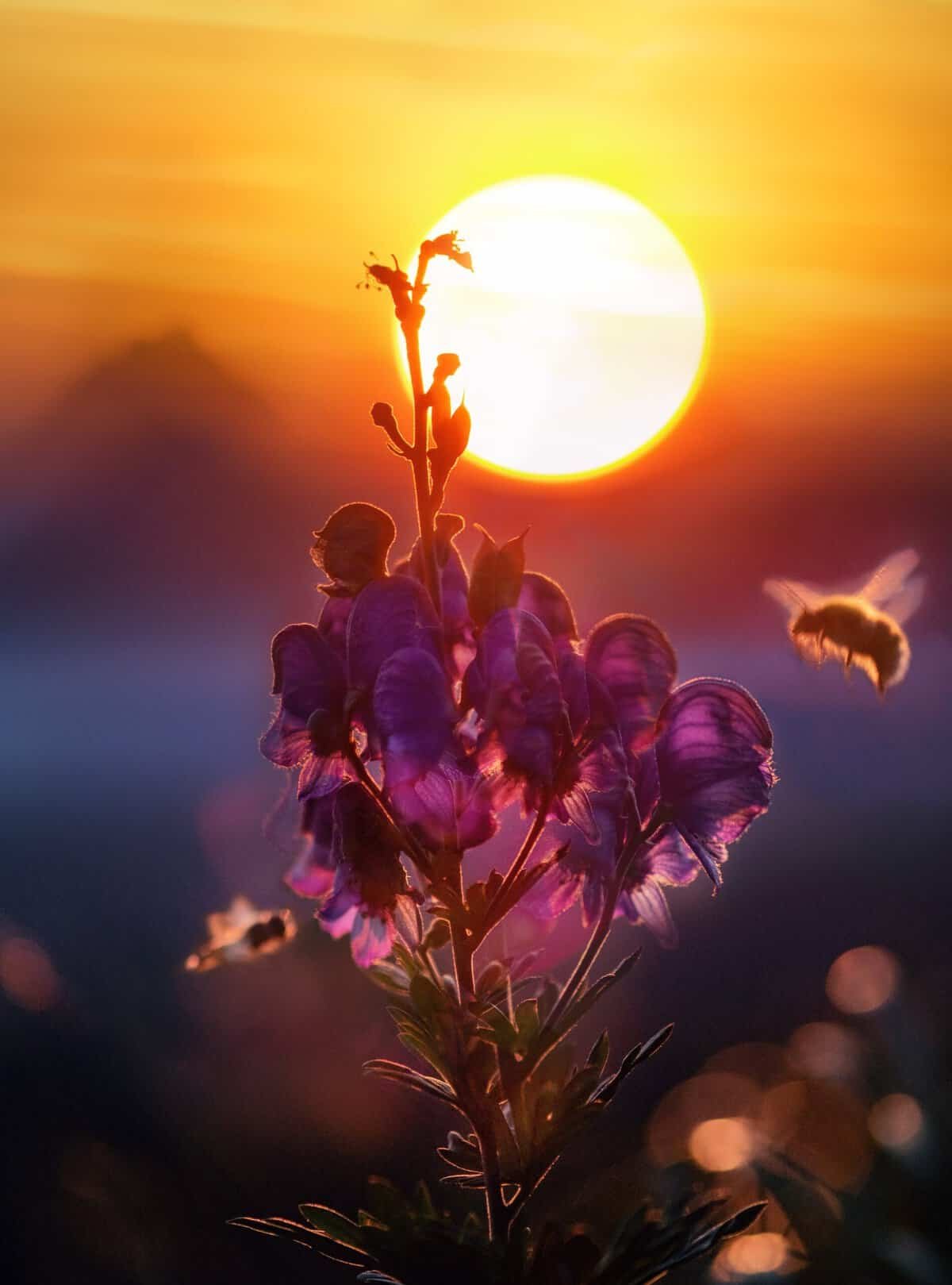
6. Integrated Pest Management for Nopal Care
Integrated Pest Management (IPM) is a holistic approach to pest control that combines multiple strategies, including the use of beneficial insects. By incorporating beneficial insects as part of your IPM strategy for nopal care, you can reduce the reliance on chemical pesticides and promote ecological sustainability.
Using Beneficial Insects as Part of IPM
Integrating beneficial insects into your IPM strategy involves identifying the specific pests affecting your nopal plants and selecting appropriate beneficial insects to control them. This can include releasing or attracting ladybugs, parasitic wasps, hoverflies, or green lacewings to target the pests.
To integrate beneficial insects effectively, it is essential to monitor pest populations and beneficial insect presence regularly. This allows you to assess the effectiveness of the beneficial insects in controlling the pests and make necessary adjustments if needed. By maintaining a balanced and healthy ecosystem through the utilization of beneficial insects, you can reduce the need for chemical pesticides and ensure the long-term health of your nopal garden.
Combining Beneficial Insects with Other Pest Control Methods
While beneficial insects are valuable allies in pest control, they are not always sufficient on their own. Consequently, combining beneficial insects with other pest control methods can enhance the overall effectiveness of your IPM strategy.
Cultural practices, such as proper sanitation, plant spacing, and regular pruning, are essential components of nopal care. These practices aim to reduce the conditions that favor pests and create a less hospitable environment for their development. By implementing good cultural practices, you can create a healthier and less attractive environment for pests, reducing their impact on your nopal plants.
Physical barriers, such as netting or row covers, can be used to physically exclude pests from nopal plants. This method is particularly effective against larger pests, such as birds or rabbits, which may cause significant damage if left uncontrolled.
Biological controls, including the use of beneficial insects, should be integrated into your IPM strategy. By releasing beneficial insects or creating suitable habitats to attract them, you can increase their populations and improve pest control. This approach is especially beneficial for pests that are susceptible to the predation or parasitism of beneficial insects.
When necessary, targeted and judicious applications of low-toxicity pesticides may be considered as a last resort in extreme pest situations. However, it is important to exercise caution and use pesticides sparingly to avoid negative impacts on beneficial insects and the environment. Always follow the instructions and precautions provided by pesticide manufacturers.
By combining beneficial insects with other pest control methods, you can implement a comprehensive IPM strategy that addresses pest issues while minimizing the environmental impact and promoting the long-term health of your nopal garden.
7. Maintenance and Monitoring
To ensure the continued success of beneficial insects in your nopal garden, regular maintenance and monitoring are crucial. By actively assessing the population of beneficial insects and providing suitable conditions, you can create an environment that supports their presence and maximizes their contributions to nopal care.
Regular Assessment of Beneficial Insect Population
Regularly monitoring the population of beneficial insects in your nopal garden allows you to assess their impact on pest control and make informed decisions for future management. Observing the presence and activity of ladybugs, parasitic wasps, hoverflies, and green lacewings can provide important insights into the effectiveness of your beneficial insect strategy. If you notice a decline in beneficial insect populations, it may indicate a need to adjust your management practices or evaluate potential issues affecting their presence.
Proper Shelter and Overwintering Sites
Providing proper shelter and overwintering sites is essential for maintaining a thriving population of beneficial insects. Many beneficial insects, such as ladybugs, parasitic wasps, and green lacewings, require suitable sites for hibernation or overwintering. This ensures their survival during harsh weather conditions and provides a source of reestablishment for the next growing season.
Create suitable overwintering habitat by leaving undisturbed plant debris, such as fallen leaves or stalks, which can serve as protective cover for the beneficial insects. Providing nesting sites, such as rock piles or bundles of twigs, can also attract beneficial insects and offer protection during colder months. By providing proper shelter, you increase the likelihood of retaining beneficial insect populations year after year.
Supplemental Feeding for Beneficial Insects
While many beneficial insects can find ample food sources in nopal gardens, supplemental feeding can help support their populations during periods of low pest activity or when alternative food sources are scarce. Provide sugar-water solutions or specialized insect food products to attract and nourish beneficial insects.
For example, you can create a sugar-water solution by dissolving one part sugar in four parts water. Place the solution in small, shallow dishes or containers and position them near the nopal plants. This provides a source of energy for beneficial insects and encourages their presence.
Supplemental feeding can be particularly beneficial in early spring or late fall when natural food sources may be limited. However, it is important to exercise moderation and carefully monitor the feeding stations to prevent an overreliance on supplemental food and potential overcrowding of beneficial insects.
Minimizing Harmful Chemical Application
To maintain a healthy population of beneficial insects, it is essential to minimize or avoid the use of harmful chemicals in your nopal garden. Chemical pesticides can have detrimental effects on beneficial insects, disrupting the ecological balance and compromising their ability to control pests.
If the use of pesticides becomes necessary, always opt for low-toxicity options and use them sparingly and judiciously. Target the application to the specific pest issue and avoid broad-spectrum pesticides that can harm both pests and beneficial insects. Timing and precision in pesticide application are crucial to minimize negative impacts on the beneficial insect populations.
By minimizing harmful chemical applications, you can create a favorable environment for beneficial insects and maximize their contributions to nopal care.
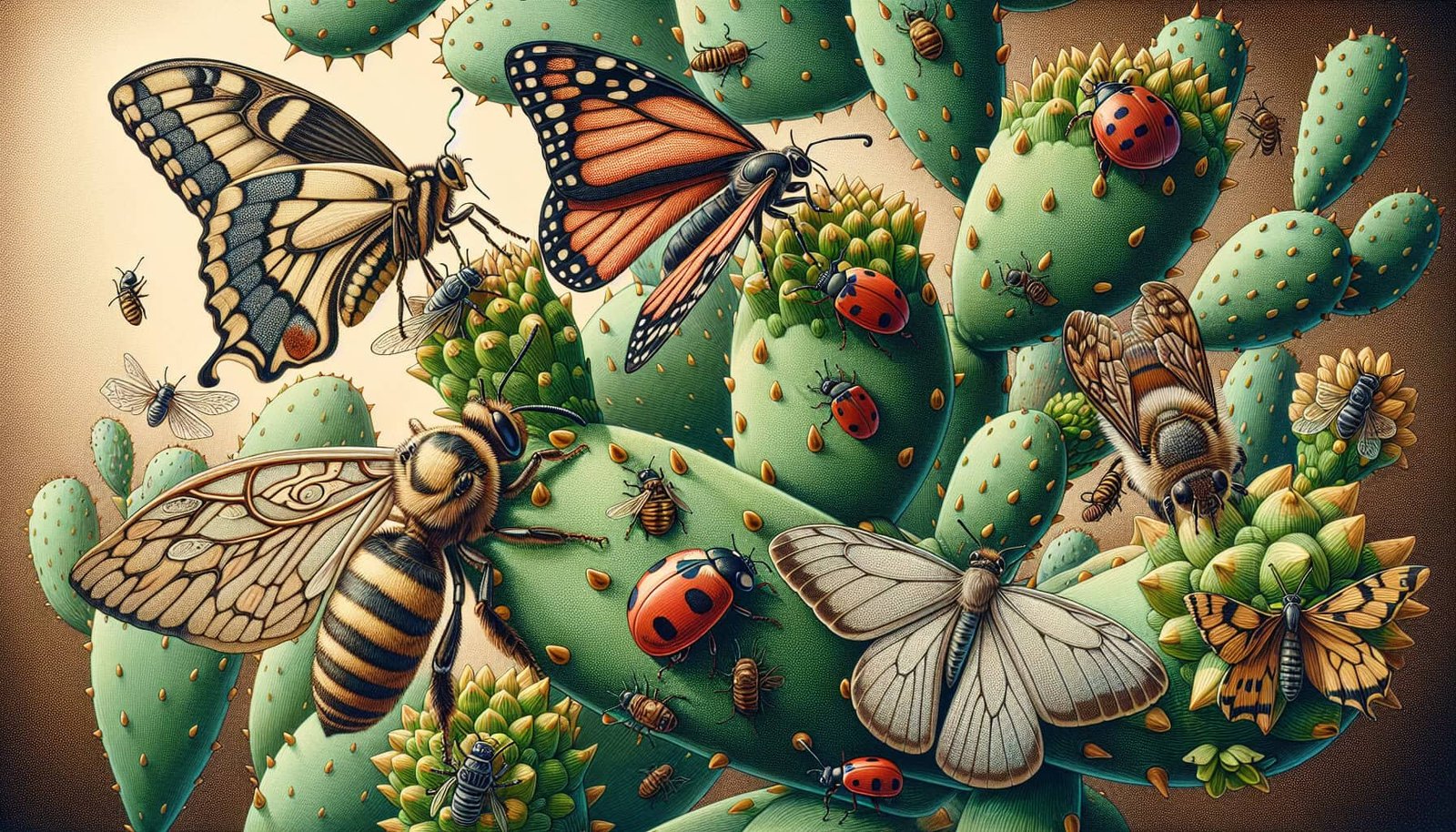
8. Potential Challenges and Solutions
Implementing beneficial insects in nopal care may present some challenges that need to be addressed for effective pest control and ecological balance. Being aware of these potential challenges and having corresponding solutions can help you overcome them and ensure the success of your nopal garden.
Potential Risks to Beneficial Insects
Although beneficial insects are resilient, they can still face risks and challenges that can impact their populations. Extreme weather events, such as heatwaves, heavy rainfall, or frost, can negatively affect the survival and reproductive success of beneficial insects. Additionally, the use of harmful chemical pesticides or the presence of non-target predators can harm beneficial insect populations.
To mitigate these risks, it is crucial to create a suitable habitat that provides shelter, food sources, and overwintering sites for beneficial insects. Minimize the use of chemical pesticides and opt for targeted and low-toxicity alternatives when necessary. Regularly assess the health and presence of beneficial insects to identify any potential risks or issues and take timely action to address them.
Dealing with Pest Outbreaks
Despite the presence of beneficial insects, occasional pest outbreaks can still occur in nopal gardens. These outbreaks can be due to various factors, such as favorable environmental conditions or the introduction of new pest species.
When facing a pest outbreak, it is crucial to monitor the situation closely and assess the impact on your nopal plants. If the pest outbreak surpasses the control capabilities of beneficial insects, you may need to consider additional management strategies, such as physical barriers, cultural practices, or targeted low-toxicity pesticides. Introducing or releasing more beneficial insects specific to the pest can also help rebalance the ecosystem and regain control over the outbreak.
It is important to maintain a flexible approach and adapt to changing circumstances to effectively manage pest outbreaks in your nopal garden.
Addressing Imbalances in the Ecosystem
Maintaining a balanced ecosystem is paramount for the long-term success of nopal care. Sometimes, disruptions or imbalances can occur, affecting the plant’s health, productivity, and the presence of beneficial insects.
To address imbalances in the ecosystem, it is essential to assess the overall state of your nopal garden and identify potential contributing factors to the imbalance. Poor soil quality, nutrient deficiencies, inadequate water supply, or extreme weather conditions can all disrupt the balance.
Take steps to correct these imbalances by improving soil fertility, amending nutrient deficiencies, providing appropriate water management, and implementing measures to mitigate the effects of extreme weather. This helps create an environment that supports the growth and health of nopal plants while promoting the presence and effectiveness of beneficial insects.
By addressing imbalances in the ecosystem, you can ensure the continued success of your nopal garden and maintain a thriving population of beneficial insects.
10. Conclusion
Beneficial insects play a crucial role in maintaining the health and balance of nopal gardens. By incorporating these natural allies into your nopal care routine, you can reduce the reliance on chemical pesticides, promote pollination, facilitate organic fertilization, and improve soil conditioning. Ladybugs, parasitic wasps, hoverflies, and green lacewings are just a few examples of beneficial insects that can contribute to the well-being of nopal plants.
Creating a diverse habitat, planting nectar-rich flowers, utilizing companion planting, providing access to water sources, and avoiding pesticide use are effective strategies for attracting and retaining beneficial insects in your nopal garden. By adopting integrated pest management practices and combining the use of beneficial insects with other pest control methods, you can enhance the overall health and productivity of your nopal plants while minimizing environmental impacts.
Regular maintenance and monitoring, in addition to addressing potential challenges and imbalances, are vital for ensuring the long-term success of beneficial insects in nopal care. By actively assessing the population of beneficial insects, providing suitable shelter and food sources, and minimizing harmful chemical applications, you can create a thriving ecosystem and reap the benefits of their contributions.
In conclusion, integrating beneficial insects into your nopal care routine offers numerous advantages while fostering a sustainable and balanced ecosystem. By understanding their roles, implementing specific strategies, and addressing potential challenges, you can ensure the success of your nopal garden and the well-being of the beneficial insects that support it.
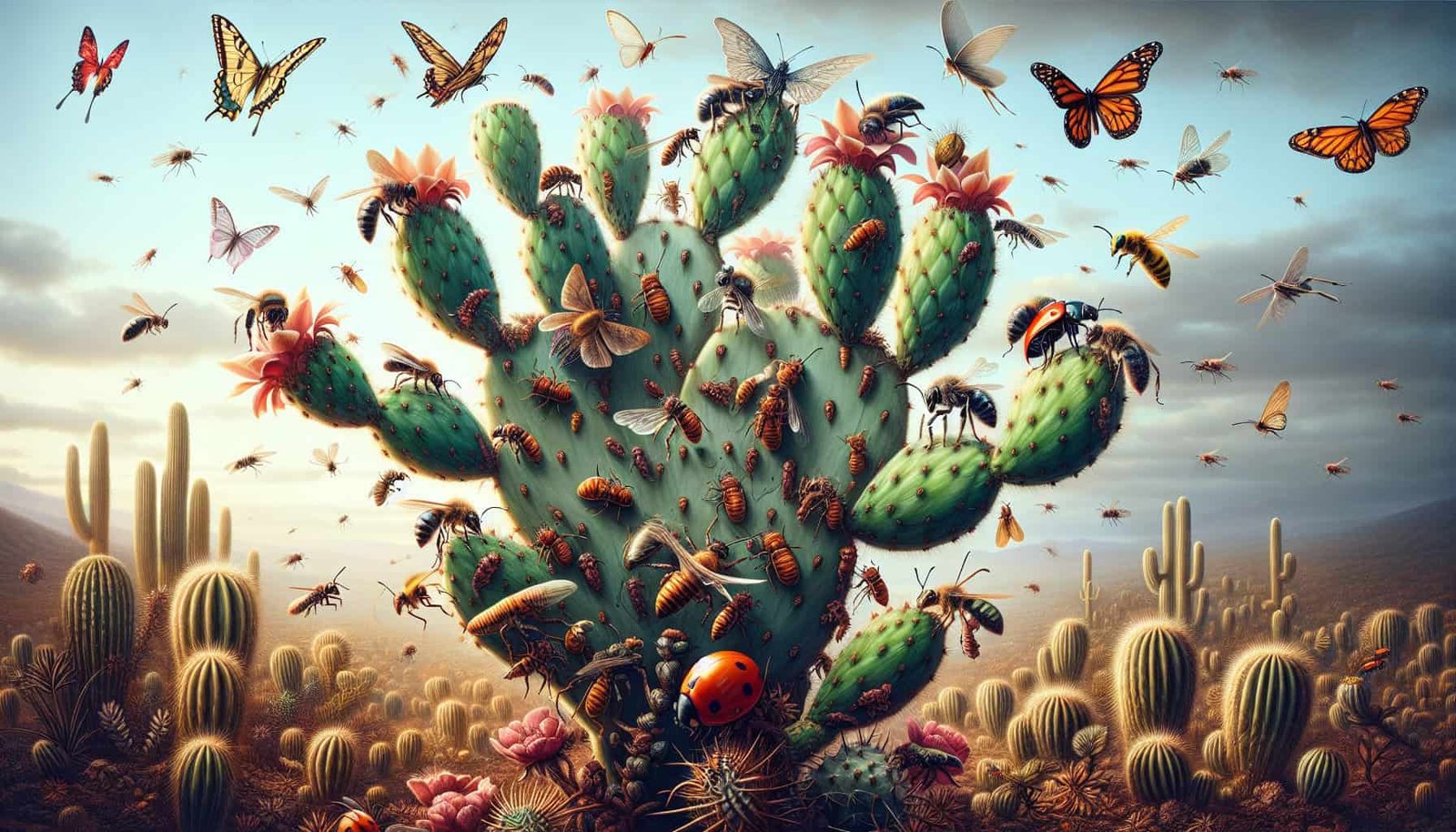
Future Directions for Beneficial Insect Use in Nopal Care
As the understanding and appreciation for the role of beneficial insects in nopal care continue to grow, there are several future directions that can further enhance their use and maximize their benefits.
Research and education play a crucial role in advancing knowledge and awareness of the importance of beneficial insects. Continued research can uncover new information about specific beneficial insect species, their interactions with pests and the environment, and their contributions to nopal care. This knowledge can inform the development of targeted management strategies, including the selection and release of beneficial insects specific to nopal gardens.
Education and outreach efforts can also play a key role in promoting the integration of beneficial insects into nopal care practices. Providing resources and guidance to nopal gardeners, farmers, and agricultural professionals can increase awareness and understanding of the benefits of beneficial insects. This can empower individuals to make informed decisions and implement effective strategies for pest control and ecosystem management.
Furthermore, technological advancements, such as the use of pheromones or attractants, can aid in attracting and monitoring beneficial insects. Pheromones can help attract specific beneficial insect species to nopal gardens, enhancing their presence and effectiveness in pest control. Additionally, the development of monitoring tools and techniques can enable more accurate assessments of beneficial insect populations and their impact on pest management.
Overall, the future of beneficial insect use in nopal care looks promising. By fostering research, education, and technological advancements, we can continue to harness the benefits of these natural allies and further improve the sustainability and productivity of nopal gardens.

